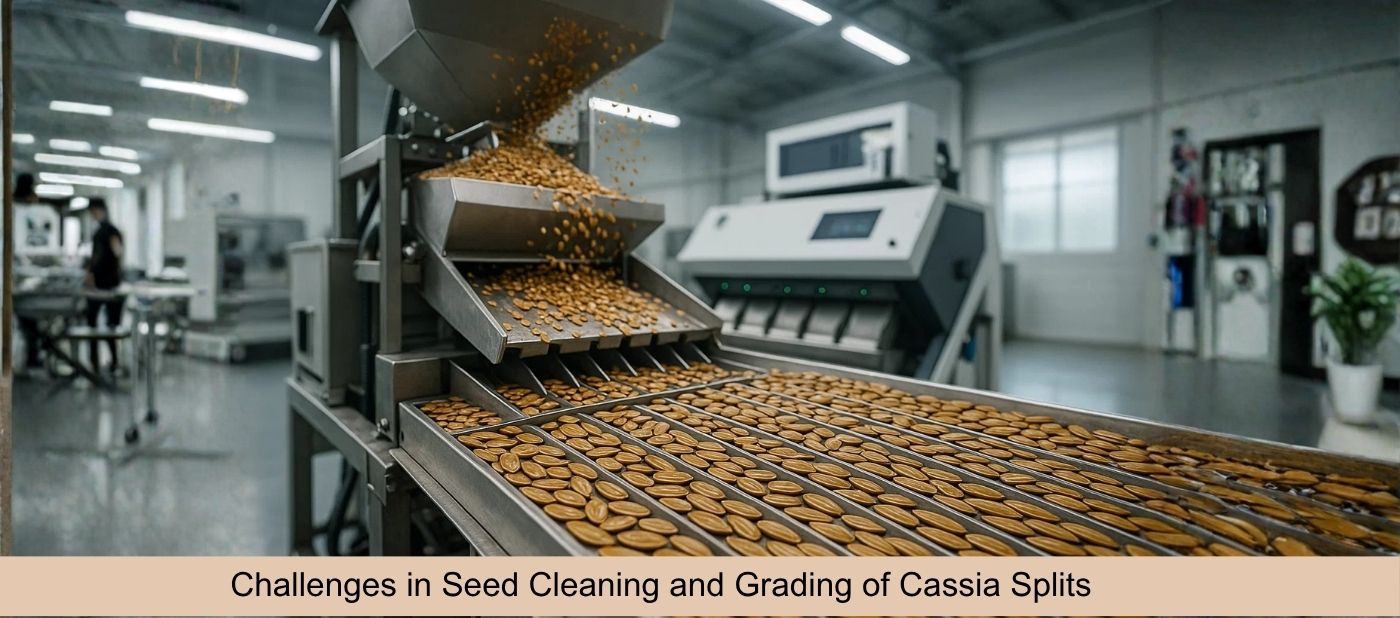Cassia Tora Splits Manufacturing Challenges and Quality Control Methods
Cassia Tora, scientifically recognized as Senna tora, is a widely utilized leguminous plant valued for its various derivatives, particularly cassia tora splits. These splits are obtained from the seed’s endosperm and are primarily used in the production of cassia gum, a thickening agent with applications in food processing, textile printing and pharmaceuticals. However, the extraction and refinement process of cassia tora splits is both technically intricate and sensitive to quality variables.
The manufacturing of cassia tora splits involves several critical phases, including dehusking, separation, washing, drying and milling. Each of these steps poses distinct challenges that can influence the product’s final purity, viscosity and functional efficiency. Moreover, ensuring consistent cassia tora splits quality requires rigorous control protocols and analytical standards. This article addresses the core manufacturing challenges and outlines the most reliable quality control methods relevant to the cassia tora splits industry.
Overview of Cassia Tora and Its Industrial Relevance
Cassia Tora is cultivated in various parts of Asia and Africa for its economic significance. The cassia tora seed contains three main parts: husk, germ and endosperm. The endosperm, when isolated, forms the cassia tora splits, which are the key input for producing cassia gum powder. Due to its galactomannan structure, cassia gum acts as a thickener, emulsifier and stabilizer.
Cassia tora uses span across food-grade applications to cosmetic and pharmaceutical products. However, the industrial demand is not solely based on availability; it critically hinges on the uniformity, purity and viscosity of the processed splits.

Seed Cleaning and Grading of Cassia Splits: The Initial Barrier
The first challenge arises during the seed cleaning process. Harvested cassia tora seeds are often mixed with dirt, stones and broken seeds. Inadequate cleaning affects the downstream processing phases, leading to contamination in the final product.
Grading is equally critical. Uniform seed size ensures consistent dehusking and splitting. Non-uniformity can result in partial splitting or incomplete germ-endosperm separation, decreasing processing yield.
Key issues:
- Dust and debris leading to clogging of machinery.
- Inconsistencies in seed grading reducing operational efficiency.
- Risk of fungal contamination during storage if not handled properly.
Dehusking and Splitting of Cassia Tora Splits: A Mechanical Challenge
The dehusking process aims to remove the seed’s outer covering. However, cassia seeds are naturally hard-coated, making this step mechanically demanding. Rotary or disc-type dehusking machines are used, but issues include:
- Over-dehusking, which may damage the endosperm.
- Under-dehusking, leaving husk residues that affect purity.
- Wear and tear on dehusking plates, reducing operational efficiency.
The subsequent splitting process must efficiently separate the endosperm from the germ. Inadequate calibration can result in a high volume of rejects and reduced recovery of cassia tora splits.
Separation and Washing: Controlling Purity Parameters of Cassia Powder
Once splits are obtained, they are subjected to a gravity-based separation to eliminate husks and other residues. Despite automated systems, complete separation is challenging due to:
- Similar weight profiles of husks and splits.
- Residual germ particles adhering to the endosperm.
The washing process, while essential for impurity removal, must be carefully controlled. Excessive washing may affect the structural integrity of the splits, while insufficient washing retains dust and husk fragments.
Drying of Cassia Tora Powder: Ensuring Optimal Moisture Levels
Drying is a critical phase where moisture content is reduced to prevent microbial growth and preserve the functional properties of the splits. Natural sun drying and mechanical dryers are both used depending on the production scale.
Common drying-related challenges include:
- Uneven drying leading to moisture pockets.
- Risk of microbial contamination due to improper drying.
- Overdrying, which can make the splits brittle and difficult to mill.
Controlling the drying environment (temperature, humidity, duration) is essential to maintain cassia tora powder quality post-processing.
Milling and Powder Consistency
After drying, the splits are milled into cassia gum powder. The objective is to achieve a fine, uniform particle size suitable for intended applications. However, milling consistency is often compromised by:
- Variation in hardness of the dried splits.
- Equipment limitations in handling high-viscosity materials.
- Incomplete milling resulting in inconsistent granulometry.
These factors can directly impact the powder’s functional behavior in formulations, especially where precise thickening properties are needed.
Quality Control in Manufacturing: An Ongoing Requirement
Quality control is a continuous process during cassia tora splits production. The product must meet parameters for:
- Purity (absence of husk or foreign matter)
- Moisture content
- pH stability
- Viscosity and solubility
- Color and odor
Standard laboratory tests include moisture analysis, particle size distribution and rheological measurements of viscosity under defined conditions. These tests ensure that the splits or the resulting cassia powder meet industrial standards.
Microbial Contamination of Cassia Tora: An Overlooked Risk
Due to its organic nature, cassia tora is susceptible to microbial growth, especially if moisture control is inadequate. During various stages of storage and handling, contamination with bacteria, yeasts or molds can compromise product safety.
Preventive methods include:
- Air-tight storage in moisture-free environments
- UV sterilization or food-grade fumigation of storage spaces
- Use of anti-microbial packaging materials when applicable
Routine microbial testing is essential to confirm compliance with safety norms, particularly for food and pharmaceutical-grade products.
Conclusion
Manufacturing cassia tora splits is a highly specialized process fraught with multiple technical challenges – from seed selection and dehusking to drying and milling. These challenges directly influence the quality, safety and functional utility of the final product, especially in sectors where cassia gum powder is used extensively.
Maintaining quality at every step – through careful equipment calibration, environmental control and standardized testing – is not optional but essential. Addressing these production complexities with a structured quality control system ensures that cassia tora derivatives retain their integrity and performance across applications.
As consumer industries demand cleaner and more consistent natural ingredients, manufacturers of cassia tora splits must align with both technological advancements and regulatory expectations. By overcoming these manufacturing hurdles, the cassia tora sector can continue to provide high-value, functional products to global markets.

